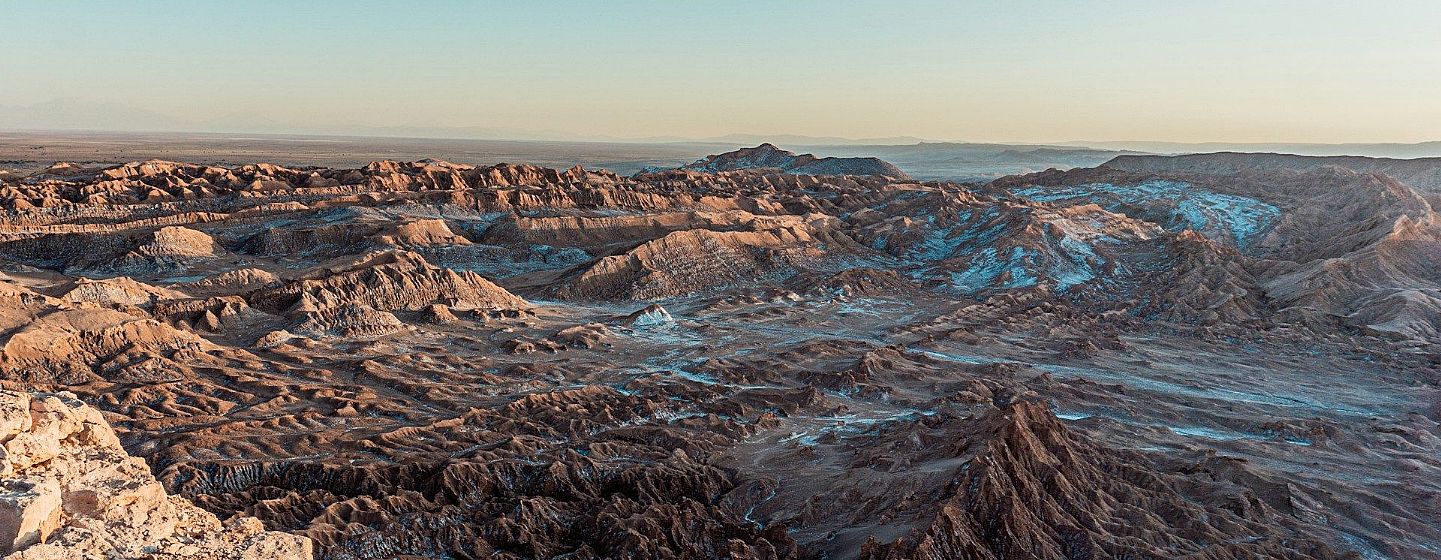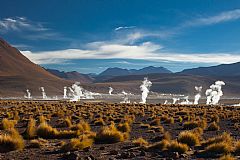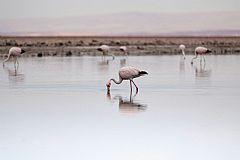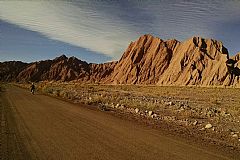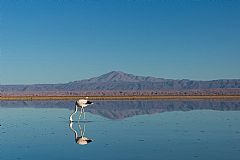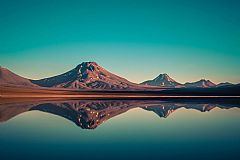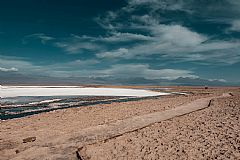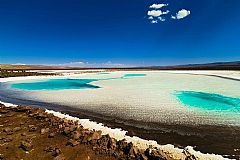Traveling to northern Chile is like boarding a spaceship bound for another planet. But not just any planet: one of endless salt flats, emerald-colored lagoons, geysers that roar with the first light of day, and skies that seem to have been designed by the gods for eternal contemplation. San Pedro de Atacama is not only one of Chile’s most spectacular destinations, but also one of the most coveted by travelers from around the world. And although it can be visited year-round, there is one season that truly shines (pun fully intended): winter.
Spending your dream vacation in the middle of the austral winter and heading to the driest desert in the world? It may sound like a bold move. But here’s why it’s actually one of the smartest and most magical decisions you could make. Below, we give you three powerful reasons to pack your backpack, your camera, and your telescope, and let yourself be amazed by San Pedro de Atacama during the coldest months of the year.
1. Clear skies: A paradise for astro-tourists
They say the best journeys begin by looking up. In San Pedro de Atacama, looking up in winter is like opening a door to the universe. Strangely enough, the driest season in this corner of the world is not summer, but winter. During summer, the so-called Altiplanic winter (also known as the Bolivian winter) brings rain and clouds that make stargazing difficult. But when the austral winter arrives—from June to August—the skies clear almost completely.
The result: clean nights, not a single cloud to block the celestial show. The stars shine with an intensity that surprises even the most seasoned astronomers, and the Milky Way appears with a clarity that most places on Earth can only dream of.
San Pedro de Atacama is, in fact, one of the best places in the world for astro-tourism, and winter is the best time of year to do it.
2. Ideal climate to escape the cold
If you live in central or southern Chile, you know what winter means: persistent rain, gray skies, and a cold that seeps into your bones. The solution? Head north and take refuge in the dry, sunny climate of San Pedro de Atacama.
During winter, daytime temperatures in this part of the Chilean highlands range between 20 and 21°C, and under the desert sun, they feel even warmer. Walking through Valle de la Luna, biking among rock formations, or floating in a salty lagoon under a completely blue sky is an experience that rejuvenates both body and soul. It’s like taking a vacation from winter without even leaving the country.
That said, the temperature difference between day and night is significant: while the daytime feels like spring, nighttime temperatures can drop below 0°C. So, it’s important to come prepared with warm clothes, especially if you plan to wake up early to see the Tatio geysers at sunrise or head out at night for astrophotography.
3. It’s low season!
One of the best-kept secrets about visiting San Pedro de Atacama in winter is that you’ll be going during low season. And for a smart traveler, that means one thing: advantages everywhere!
With less tourist demand during the winter months, prices go down, which allows you to go on more excursions for less money. You can visit Valle de la Luna, the Altiplanic Lagoons, the Tatio geysers, and the Atacama Salt Flat without feeling like you’re breaking your budget. On top of that, accommodations are usually more available and more affordable.
But perhaps the most valuable part is the peace and quiet. San Pedro de Atacama, during summer or long weekends, can become crowded with visitors, often taking away from the feeling of connection with the landscape. In contrast, in winter you can take photos without crowds in the background, hike along empty trails, and take in the desert scenery in absolute silence. That feeling of having the desert all to yourself is priceless. And a winter trip to San Pedro can give you exactly that!
You may also be interested in: Bahía Inglesa, among the 100 best beaches in the world according to the Golden Beach Awards

